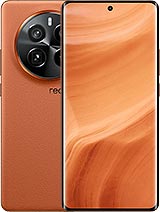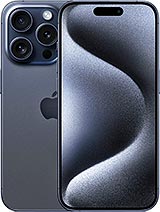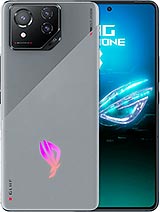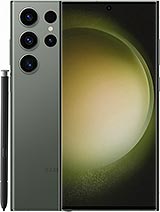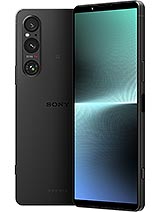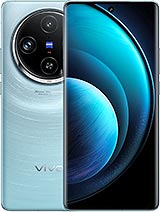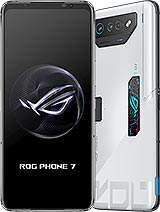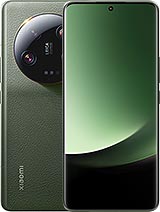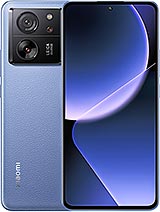Asus ROG Phone 8/8 Pro review

New 6.78-inch, 165Hz AMOLED display with a punch hole
A great display is central to a great gaming experience. Asus has traditionally delivered in this area and has always prioritized an uninterrupted visual experience over modern looks. The ROG Phone 8 and 8 Pro represent a shift in that mentality. Don't get us wrong, the new display is still just as impressive technically as it has always been, and then some. However, it is no longer uninterrupted. The ROG Phone 8 has a selfie punch hole. On the flip side, the screen-to-body ratio is now an impressive 94%.
Other than that, the display still measures the same 6.78 inches in diagonal and is rocking a FullHD+ (1080 x 2448 pixel) resolution, working out to around 395 ppi. That hasn't changed, and neither has the 165Hz refresh rate and 720Hz touch sampling rate.

Asus has been going to Samsung for its displays for some time now, and the ROG Phone 8 is no exception. It uses a Samsung E6 Flexible AMOLED panel. Said panel uses LTPO tech to achieve variable refresh rate between 1Hz and 120Hz.
Another major advancement of the E6 OLED tech is the improved brightness. Asus advertises 1,600 nits of entire display brightness and a whopping 2,500 nits of peak brightness. We measured 831 nits of brightness by maxing out the slider and 1,765 nits in max auto mode. Our standardized measurement involved 75% of the display area, so Asus' numbers seem to check out perfectly.
On the topic of color rendition and accuracy, the ROG Phone 8 Pro has many color modes to explore. Optimal is the default one, which seems to target the DCI-P3 color range but has slightly boosted colors. The Natural mode tones down most of the colors but covers a slightly wider color range than Optimal.
Then there is Cinematic mode, which basically nails the DCI-P3 color space with deltaE values well into what would be considered color-accurate. Finally, Standard mode is a great match for the sRGB color space.
You can also select the Customized option and tune the white point manually on top of being able to adjust the color temperature in each mode.
Just like last year, ROG Phone 8 models have support for HDR10+ on their displays. In terms of hardware decoders, the ROG Phone 8 Pro reports support for HDR10, HDR10+ and HLG, just missing Dolby Vision.



Widevine • HDR support • Netflix playback capabilities
The ROG Phone 8 Pro also has the highest possible Widevine L1 DRM certification, allowing services like Netflix to offer FullHD streams to saturate its resolution fully. It is worth noting that at the time of writing, Netflix does not recognize any HDR support on the ROG Phone 8 Pro. That could eventually change since Netflix operates its own per-device whitelists. In fact, Netflix wasn't even available on the Google Play Store at the time of writing this review. We had to sideload it on the phone.
High refresh rate handling
Like its predecessor, the ROG Phone 8/8 Pro has a 165Hz refresh rate. This year, it is accompanied by LTPO tech, which, to our knowledge, is a first for the ROG Phone line.

This newfound LTPO tech is the reason why the ROG Phone 8 family technically supports fewer refresh rate options, as reported by the OS and available in the settings menu. Gone are the 90Hz and 144Hz modes from the ROG Phone 7 generation. Instead, you get 60Hz, 120Hz and 165Hz as well as an Auto mode in settings. The OS reports 60Hz, 120Hz and 165Hz as available modes. As per Asus' official info, LTPO enables granular variable refresh rates between 1Hz and 120Hz.
The ROG Phone 8 Pro has this quirk that does not allow us to capture the system refresh rate reader from the Android developer settings in screenshots, which means we can't illustrate how the refresh rate handling works. However, we can describe it since it seems fairly straightforward.
First, the easy part - the top 165Hz mode seems to work as a "locked" mode. All of the UI and almost every app, except for some that specifically request 60Hz, just work at 165Hz. There is no automatic switching behavior.
Auto mode and 120Hz mode seem to work exactly the same - they adjust the display refresh rate dynamically between 1Hz and 120Hz to match what is happening on screen. In practice, the refresh rate seems to drop down to 5Hz to save power when there is no motion on display, and you are not interacting with the phone.
Finally, there is 60Hz mode, which, unlike the top 165Hz mode, is not a "locked" mode. It still employs automatic refresh rate switching based on what is happening on screen but varies the refresh rate between 1Hz and 60Hz.

The system works very well with games, as expected. All of the titles we tried that we know can push past 60fps worked as expected and did so in 165Hz, 120Hz and Auto modes.

Overall, we really like how the ROG Phone 8 Pro handles its automatic refresh rate and appreciate the new dynamic refresh rate enabled by LTPO. We have no complaints with the whole system, which is rare since we always find at least a couple of faults with how modern phones handle their refresh rate. Top marks for Asus here.
Battery life
Battery endurance has traditionally been a big focus for ROG Phone devices in the past. This priority hasn't necessarily changed, but the ROG Phone 8 does have a reduced battery capacity compared to previous generations of ROG Phone. You get a total of 5,500 mAh instead of 6,000 mAh like in the past. After all, the ROG Phone 8 is thinner and lighter than its predecessor, so it does make sense that the battery capacity would be slightly reduced.
Like some previous ROG Phone models, the ROG Phone 8 and 8 Pro have a split battery design with two actual 2,750 mAh battery packs inside the phone. This works well with the center-PCB design for the internals and the matching cooling system. Everything is synergistically designed together in this manner.

Asus has another design trick also carried forward from last year - MMT battery technology and a double-wired split design. MMT stands for Middle Middle Tab and increases the energy density in a battery by charging it from the middle outwards instead of from the ends, which lowers impedance and temperature.
Lower temperatures allow higher wattage charging to be sustained longer before entering trickle charge (constant voltage). So, technically, what Asus has done here is approaching the problem of tapering-off charging wattages in a different way, through MMT tech, in place of simply a larger single battery. Neat!
The ROG Phone 8 Pro scored an awesome Active Use Score of 14:43 hours. It did great across the board in our testing. Asus claims the ROG Phone 8/ 8 Pro should be good for up to 22.7 hours of Netflix streaming, 17 hours of Instagram browsing and 14.4 hours of TikTok streaming. The Taiwanese giant also addresses the fact that the battery capacity has been reduced and claims that despite that fact, the ROG Phone 8 has a very similar overall battery endurance to the ROG Phone 7 generation (within a 2% difference).
Looking at some of the battery numbers in more detail, we can see that the ROG Phone 8 is quite similar to the ROG Phone 7 Ultimate in our Active Use Score test. In fact, we can see that ROG Phone 8 does better in the web browsing test compared to its predecessor. This could easily be thanks to the newfound granular, LTPO-powered variable screen refresh rate. It could also help the ROG Phone 8 Pro score, which is similar to the ROG Phone 7 Ultimate in the gaming test. Calls and video streaming are two test areas where the ROG Phone 8 Pro still loses out to its predecessor. However, that is expected since neither scenario can benefit much from things like LTPO of improved general chipset efficiency.
Charging and battery care
Asus has been relying on 65W fast charging tech for some time now, and the ROG Phone 8 generation is no exception. It uses HyperCharge, sometimes called Direct Charge, which is an entirely standard Power Delivery 3.0 with Programmable Power Supply (PPS) with additional support for Quick Charge 3.0 and 5.0. Both available USB Type-C ports on the phone support this 65W charging scheme. We also got a compatible charging adapter bundled with both our ROG Phone 8 Pro Edition and the regular ROG Phone 8.

Asus claims that the ROG Phone 8 should be able to charge from dead to full in 39 minutes. We mostly managed to confirm these claims, achieving 46% charge in 15 minutes, 80% in 30 minutes and then a full charge taking 42 minutes.
The lack of wireless charging has been a long-standing gripe with ROG Phone users. Asus finally decided to address it with the ROG Phone 8 generation by including 15W Qi 1.3 charging.
Asus also takes battery care pretty seriously. This is not a newfound priority either, as previous ROG Phones have also enjoyed more than a few extensive options and features in this regard. Starting with the ROG Phone 5, everything related to PowerMaster is merged and organized within the battery settings menu for added convenience.
Starting with the basics, there are quite a few System modes. A few predefined ones, which are also accessible through the Armoury Crate app, since they do a lot more than just tweak your battery profile and behavior, but basically, with X Mode, you get the fewest restrictions on battery usage, followed by Dynamic, which is the sort-of default one you are meant to use daily and then Ultra durable is your battery saver.
The Ultra Durable mode can also be activated on a schedule, which is neat for off-hours.

Beyond this, there is also a dedicated Battery care menu. Custom charging limit is a pretty common and well-known feature in the laptop realm. Basically, it allows you to limit the time your battery spends at 100% charge, which is detrimental for it in the long term and has the phone stop charging automatically at, say, 90% or 80%.




Battery care • Steady charging • Scheduled charging
While keeping a battery pinned at full charge for prolonged periods is bad, heat is the biggest battery killer. A faster charging rate usually means more heat. Hence, the Steady charging option is included. It allows you to effectively cap the charging rate to lower wattage and choose longevity over a faster top-off. There are two levels of Steady Charging to choose from - Steady and Ultra Steady with increasingly lower wattage caps.
You can also combine Steady Charging and the Custom Charging limit with Scheduled charging. As the name suggests, it is a system that charges your battery intelligently on a curve so that it does not stay pinned at 100%, constantly trickle charging for hours. Especially convenient for overnight charging and includes options such as end time by alarm, do not disturb, airplane mode and turning off the battery-led indicator.
Last but definitely not least, the ROG Phone 8 has a Charging mode selection menu where Bypass charging resides. The name is self-explanatory - you can connect a power source and power the phone without charging the actual battery. This is great for things like prolonged gaming sessions without unnecessarily harming the battery.
Speakers and audio output
Good audio is key to a great multimedia experience, and Asus has always put a lot of work into that aspect of the ROG Phone. With its newfound slimmer bezel design, the ROG Phone 8/8 Pro has unfortunately undergone a downgrade in the audio department. There simply isn't as much space as before to fit large dual front-facing speakers.

First, the basics - the ROG Phone 8 Pro still has a stereo speaker setup. It is just not a symmetrical one like before, with large front-facing drivers on either side. Instead, you get a 1115K Super Linear bottom-firing speaker on one end and a 1216P Super Linear speaker on the other. The latter is front-facing, which already means that the two are not quite balanced. There is also a small difference in the size of the speaker box of each speaker. The bottom one gets a 1.0cc box while the top one gets a larger 1.3cc one. Also gone is the dual-DAC solution from previous ROG Phone models and the ROG Phone 8 Pro just has a single Qualcomm Aqstic WCD9395 DAC. Even so, the output sounds very good in person. Our testing confirms these observations as well. The downgrade isn't as severe as we originally thought. That being said, the downgrade is still there, and the ROG Phone 8 Pro doesn't get nearly as loud as its predecessors.
Use the Playback controls to listen to the phone sample recordings (best use headphones). We measure the average loudness of the speakers in LUFS. A lower absolute value means a louder sound. A look at the frequency response chart will tell you how far off the ideal "0db" flat line is the reproduction of the bass, treble, and mid frequencies. You can add more phones to compare how they differ. The scores and ratings are not comparable with our older loudspeaker test. Learn more about how we test here.
As mentioned, the ROG Phone 8 Pro still has some audio goodies to go over. For one, Asus still partners with DIRAC. That includes Hi-Res Audio (HRA) and Hi-Res Audio Wireless certifications as well as the Dirac Virtuo headphone spatial audio enhancer, introduced last year with the ROG Phone 7. It works on any connected set of headphones and employs high-resolution binaural room impulse response technology to restore speaker crosstalk and correct the stereo soundstage. The desired effect is to make it so that sound seemingly comes from a pair of premium stereo speakers in front of the listener as opposed to from inside their head.
The ROG Phone 8 Pro supports all major Bluetooth audio transmission standards, including aptX adaptive, aptX Low latency, aptX Lossless Audio, LDAC and AAC.
On the software side of things, most audio enhancements are still organized neatly in one location within the AudioWizard.

It offers access to a 10-band equalizer and a total of four pre-made modes: Dynamic, Music, Cinema and Game. Music is meant for general use, Cinema has a slightly wider sound stage and enhances bass and vocals. Game mode has the widest sound stage of the bunch and enhances small sounds like footsteps and high frequencies for a better spatial location.
Finally, there is Dynamic mode, which intelligently switches between Music and Game modes depending on whether Game Genie - the Asus in-game overlay is active or not. Our audio tests were done using the default Dynamic mode.
Speaking of audio, last but not least here, we do have to mention Asus' AI Noise Cancellation, which is new for the ROG Phone 8 generation. It is quite impressive in practice and works on a system-wide level. That means you can use it for noise-canceling calls, both regular cellular and VoIP, including any messenger app. In-game comms are also covered.
Probably the best thing about the system is that it is bi-directional, meaning that noise gets cleared out both from incoming sound and outgoing sound from your microphone, so you always get the benefit. All you need to do is enable the feature in settings. That's it.
Reader comments
- QaqTon
- 28 Apr 2024
- rr1
While I'm here trying to miserably run PUBG mobile on a Redmi 10. I'd give anything for an ROG phone. Y'all talk about replacing these beastphone with this or that . Me I just dream about it come to gsm and read the specs in awe for a ...
